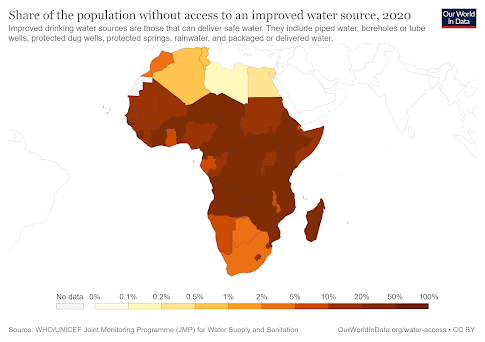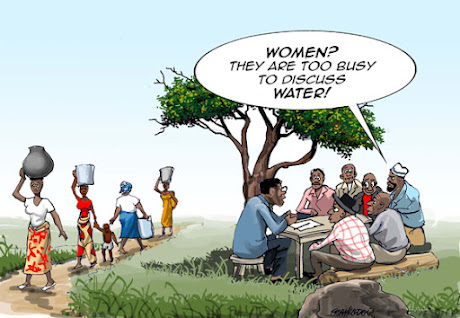Sh*t happens
Welcome
back! In this post I aim to provide perspective on the issues relating to
faecal contamination and management.
Before
we begin, it’s important to understand the reasons for faecal contaminated
water across Africa. The basic yet controversial answer would be to blame
citizens and development status. However, a more complex answer would question
the dishonesty of ‘improved water sources and inadequate provisioning of proper
management for faecal waste from the top-down level. Of course, we will be
delving into the complex answer.
‘Improved
water sources’
First
things first, we have to narrow down a definition of improved water sources. The WHO/UNICEF Joint Monitoring Programme (2017) report defined drinking water as ‘by
the nature of their design and construction, have the potential to deliver safe
water’ with three conditions: (1) accessible on premises, (2) water should be
available when needed and (3) be free from contamination. I’ll admit, even
writing the ‘so called’ classification for ‘improved water sources’ is
difficult especially after reading Nayebare's
study (2020) which revealed some shocking horrors. The study
revealed that:
~55% of improved water sources comprising shallow hand dug wells and springs showed gross faecal contamination by E. coli.
~51% of on-site sanitation facilities are unimproved.
This study investigated water, sanitation and hygiene (WASH) conditions in a small town called Lukaya located within Central Uganda, East Africa. It highlights the fragility and vulnerability of on-site WASH facilities which coincides with the inadequacy of current monitoring and maintenance. Whilst other studies find that access to improved sources have improved over time across Sub-Saharan Africa, they have failed to assess the extent to which they have been ‘improved’ therefore ignoring the aspect of ‘safe water’ (Armah et al. 2018). This failure to legitimately improve water sources is reflected in figure 1 which represents a shockingly high share of the population across African countries lacking access to SAFE, ‘improved’ water sources.
Unfortunately it is difficult, as residents across different
African countries are heavily reliant on both improved and unimproved
water sources and so, the dishonest classification of improved water
sources poses serious threats to human health and livelihoods (Mutono et al. 2020). Faecal contaminated water is
highly linked to the transmission of diseases such as cholera, diarrhoea,
dysentery. The rise in diarrhoeal morbidity is determined by poor
hygiene including open defecation, unsafe disposal of faeces and wastewater as
well as poor education and sourcing water from unsafe surface waters (Tumwine et al. 2002). Other related implications
involve difficulties with paying medical costs, being less economically
productive as well as children missing school. These negative social
implications of faecal contaminated water ultimately lies in the hands of
top-down authority due to the inadequate and unsafe sanitation systems,
which continues to be a vicious cycle.



I really like how you wrote this as one of the first posts. It is very clear with helpful examples and really does help shape the perspective on issues related to management!
ReplyDelete